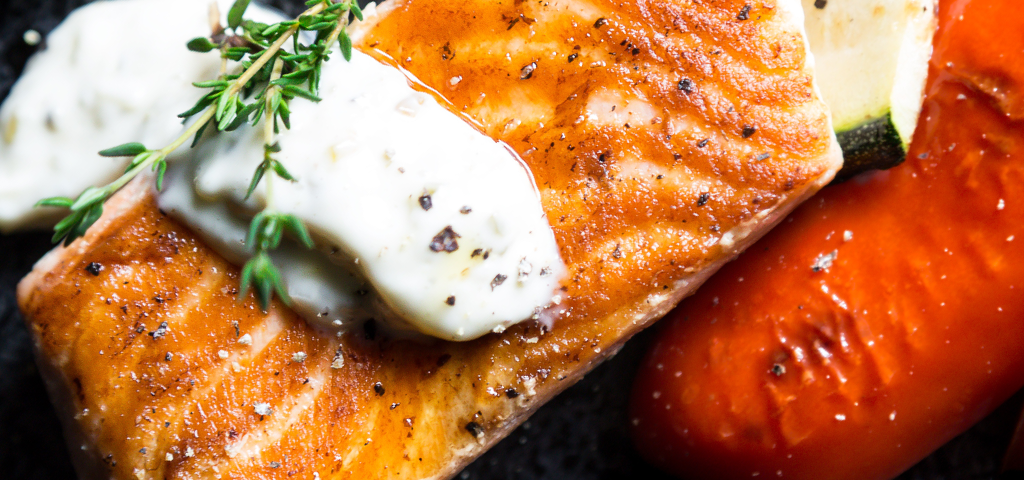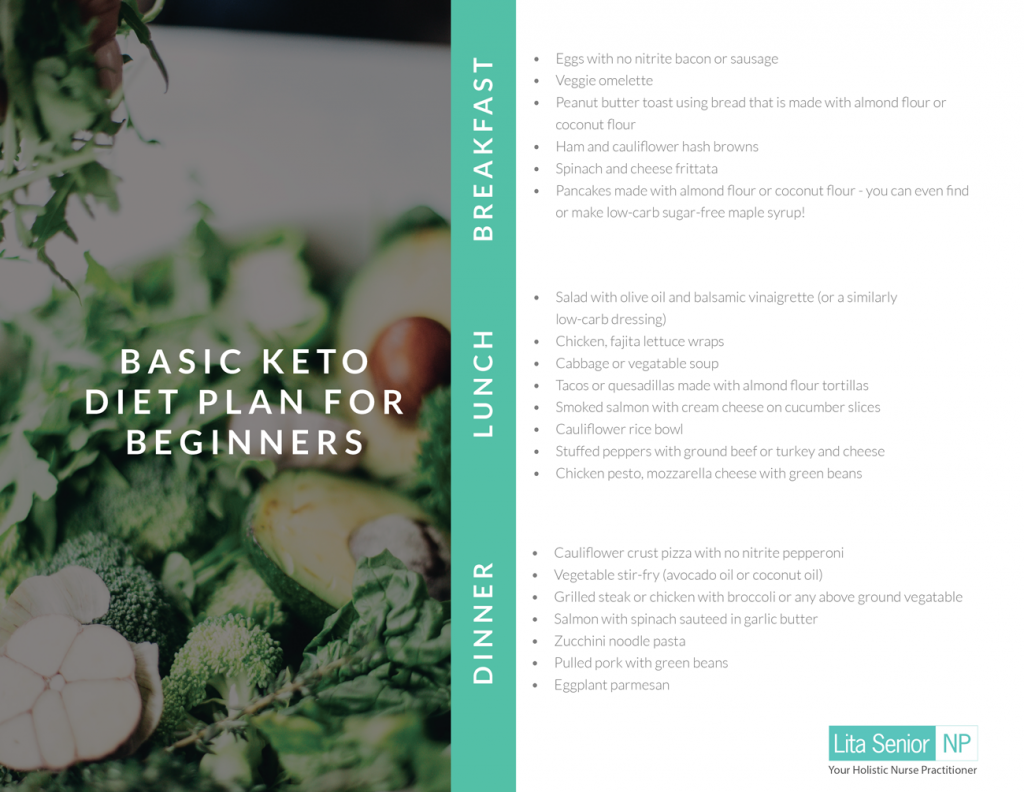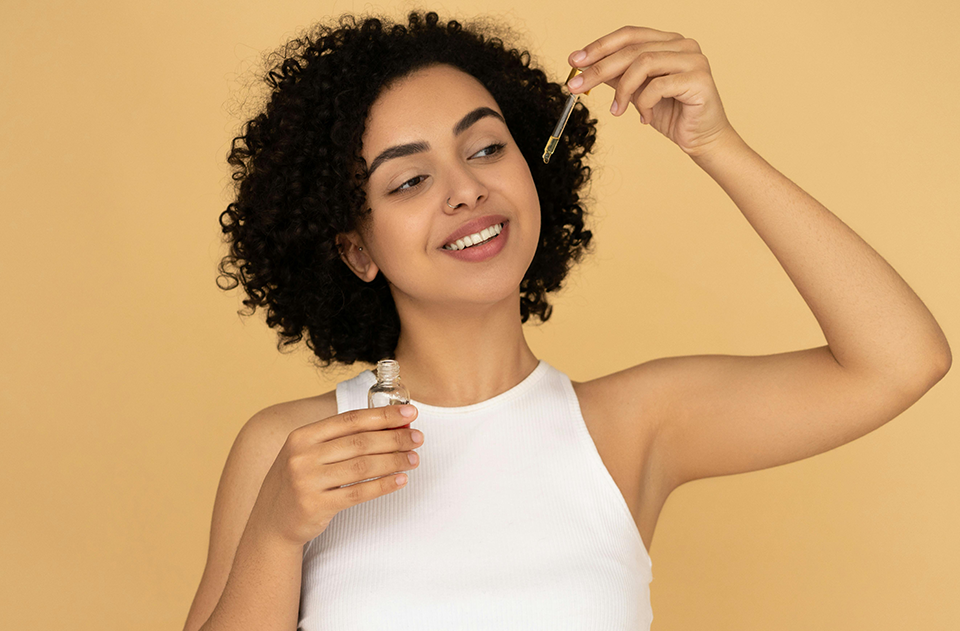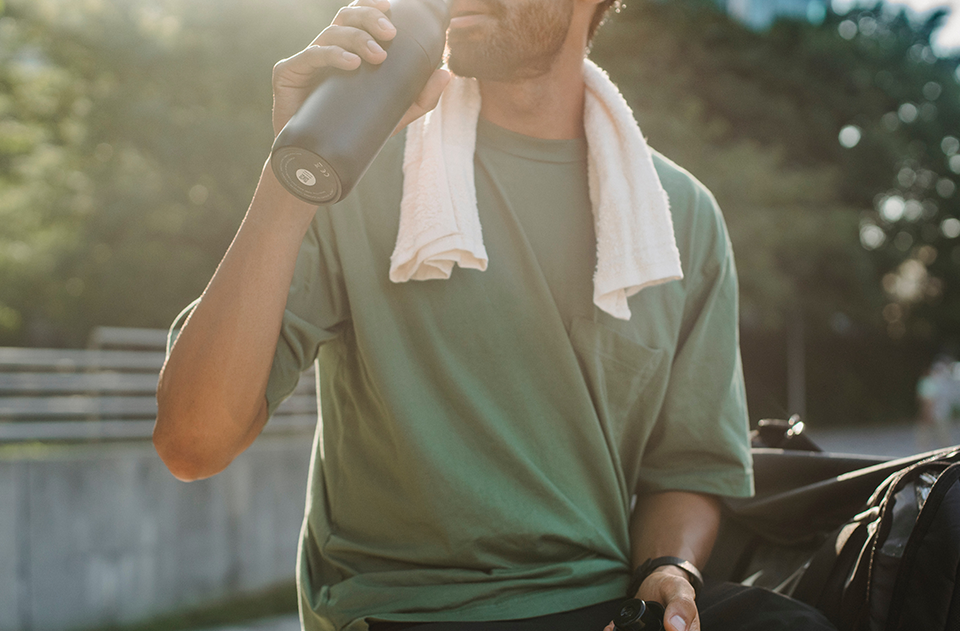Keto Diet Plan for Beginners

Your first question when considering any new diet is probably, “What can I eat?” You want to know if you can still enjoy your favorite foods, if it will be difficult to find suitable options when you go out to eat, and – most importantly – whether you will be able to stick to eating differently, or whether you will throw away all your hard work at the next office pizza party.
If you’re reading this blog, it’s probably because you’re curious about how to start a keto diet and you’re asking yourself those very questions. I’ll give you the evidence-based answers, starting with some basic guidelines to eating a keto-friendly diet, followed by a keto diet plan for beginners to get you started. If you’re still not sure whether this lifestyle change is for you, you can keep reading to gain a deeper understanding of the science and benefits so you can make an informed decision.
What You Should Eat:
Organic non-GMO is best because it is healthier and worth the little more
you pay, but is not a requirement.
- Meat and Fish – Turkey, grass-fed beef, ham, chicken, wild-caught salmon, tuna – even no-nitrate bacon! Organic is best because it is healthier and worth the little more you pay, but is not a requirement.
- Cheese – Goat cheese, blue cheese, cream cheese, cheddar, and mozzarella are all good options.
- Nuts and Seeds – Macadamia nuts, almonds, walnuts, pumpkin seeds, and chia seeds are great for incorporating into recipes
- Eggs – Eggs are low carb and a great source of protein.
- Butter and Healthy Oils – Healthy fats like those in butter, avocado oil, and coconut oil are good for cooking with. Olive oils are great when used
cold, because olives and MCT oil are also good fats. - Avocados – Most fruits are high in sugar, but avocados and avocado oil are not. They also contain healthy fat.
- Vegetables – While some vegetables are high in carbs, onions, peppers, and most green veggies like broccoli and kale will do just fine. Vegetables grown above ground are lower in carbs.
What You Should Avoid:
- Sugar – You probably aren’t surprised to see sugar at the top of this list. Candy, cake, ice cream, soda, etc. should be eliminated as much as possible. Don’t think you can beat the system with sugar-free or diet products, either – highly processed foods are often high in carbs as well. Carbohydrates turn to sugar in the body, so be sure to read the labels.
- Alcohol – Another no-brainer. Many alcoholic beverages are high in carbohydrates. Some spirits have no carbs but do metabolically burden the body.
- Grains and Starches – White bread, pasta, rice, potatoes, etc.
- Fruit and Fruit Juice – Fruit has a high sugar content (often including high fructose corn syrup) that can throw you out of ketosis. Avoid fruit juice and smoothies as well, as both often have even more sugar than the fruit itself.
- Beans and Legumes – All beans are high in carbs. Peas, lentils, chickpeas, black beans, etc. should be avoided.
- Unhealthy Fats – I’ve said it before, and I’ll say it again: keto is not a fat free-for-all! You need to discriminate between healthy and unhealthy fats, and avoid processed vegetable oils (and foods cooked in them) if you want to get results. Vegetable oil, canola oil, peanut oil, and soybean oils can all cause inflammation in your body.
Note for those who have tried the Whole30 diet, or are deciding between Whole30 and keto: The lists above are similar for both modes of eating; the biggest difference is that Whole30 prohibits eating dairy and encourages eating fruit. The reason for this is that the point of Whole30 is to cut out foods that could be having a negative impact on your health without you even realizing it, and many people are sensitive to dairy. Conversely, the purpose of a keto diet plan is to achieve a specific metabolic state called ketosis, and consuming dairy in limited amounts are usually ok.
Basic Keto Diet Plan for Beginners

Snacks and Sweets:
That’s right, it is possible for you to enjoy some snacks and sweets while maintaining a keto-friendly diet. Nuts and seeds make great snacks between meals, no meal prep required. If you have some time, you can also put together a charcuterie plate with meats, cheeses, and olives. When you’re craving something sweet, you can enjoy some dark chocolate truffles or strawberries and raspberries with cream. No sugar jello with whipping cream is another snack.
Supplements:
If you’re a fan of Shark Tank, you may have heard of the Shark Tank Keto Diet: a miracle pill that claims to help you burn fat and lose weight fast. Are alarms going off in your head? They should be! No keto pill ever appeared on Shark Tank. Several different articles attributed the product to two sister duos (Anna and Samantha Martin, and Sarah Nuse and Megan Reilly); while those women were on the show, they were pitching completely different products unrelated to nutrition or weight loss.
If you’re looking for a keto supplement to boost your experience, steer clear of gimmicks and so-called miracle pills – instead, look for exogenous ketones. Unlike endogenous ketones that your body produces during ketosis, exogenous ketones come from an outside source, usually in
Understanding Keto
Keto is a low-carb, high-fat diet that requires reducing carbohydrates and consuming more healthy fats will result in ketosis. a metabolic state in which your body is super efficient at burning fat for energy. Eating a keto-friendly diet may mean giving up or cutting back on foods you’re used to. That’s not an easy task, and it will require some dedication and willpower. If you can commit to making the lifestyle change, though, you’ll reap the benefits.
The number one benefit most people want is metabolic health. When your body reverses metabolic dysfunction like diabetes, hypertension, and insulin resistance, seen in obesity, you start to lose weight. Studies like this one have demonstrated the effectiveness of keto for losing weight.
One common misconception is that eating a keto-friendly diet will cause you to lose muscle mass and/or negatively impact your athletic ability. Don’t believe it! Studies have shown that low-carb diets do not contribute to the loss of muscle mass. You won’t be able to blame a keto-friendly diet for making you a slouch in the gym, either. Evidence shows that ketosis won’t negatively impact your ability to perform aerobic activity, so you can continue to enjoy your workouts whether they take place in the weight room, on the treadmill, or on the bike path.
What’s Next?
When it comes to making changes for your health, you want a lifestyle, not just a diet. You need to know if the changes and choices you’re making are having a positive impact on your overall health, and that’s not information you can get from your scale or your mirror. You need lab work to truly track the physical effects of a lifestyle change. Before you give this keto diet plan for beginners a try, get in touch. I can provide you with a lab slip to start the process, help you understand your lab results, and work with you to develop a path forward. Click the button to get started.





